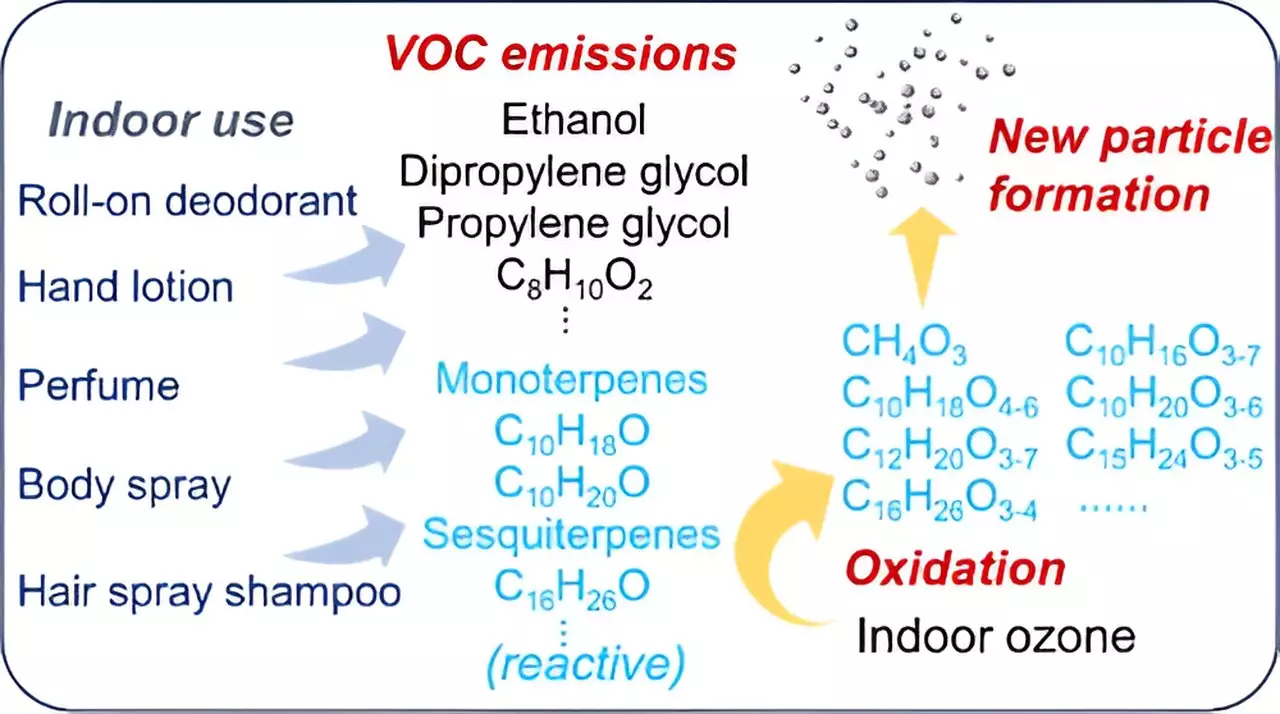Recent studies by researchers at the École Polytechnique Fédérale de Lausanne (EPFL) reveal a troubling connection between the personal care products we commonly use and the quality of indoor air. The investigation highlights how these everyday items emit a staggering array of over 200 volatile organic compounds (VOCs) into our homes, raising alarms about the potential health consequences of regular exposure to such pollutants. The study was authored by a dedicated team, including Dusan Licina, a leading figure at EPFL’s Human-Oriented Built Environment Lab (HOBEL), and represents a significant advancement in understanding indoor pollution.
The research was initiated with a seemingly innocuous shopping list of widely-used personal care products, such as deodorants, lotions, and hair sprays, frequently available in major retail outlets. The implications of this work extend beyond academic interest, potentially affecting millions who unknowingly expose themselves to indoor air degradation. By assessing these products in controlled environmental chambers mirroring real-life indoor conditions, the research team strategically aimed to uncover the hidden hazards lurking within our homes.
The experiment involved two distinct setups: one where personal care items were used without the introduction of ozone, and another where ozone—a common air pollutant—was injected into the environment to observe chemical reactions. This approach was critical, given that ozone can infiltrate homes not just from external sources, but also from indoor activities like using laser or 3D printers.
With state-of-the-art instruments designed to meticulously monitor and gauge air quality, the researchers collected data over a two-year period. In the initial phase without ozone, over 200 various VOCs were released, showing a pattern of gradual dissipation, largely due to ventilation. Among the compounds identified, ethanol and monoterpenes predominated, widely known for their presence in fragrance and cosmetic formulations.
The intriguing result came when ozone was introduced. Instead of merely interacting with the VOCs, this action catalyzed the formation of new pollutants and particulates, notably from aerosolized products like perfumes and deodorants. Alarmingly, the levels of these newly-formed compounds surpassed those found in urban centers grappling with high contamination.
Licina’s insights pose serious questions: what does the consistent inhalation of these particles mean for long-term respiratory health? The research team acknowledges a significant knowledge gap surrounding the toxicity of these new indoor air pollutants, particularly those generated close to our respiratory zones. Their thesis emphasizes the urgency for new toxicological investigations to explore the potential ramifications of daily exposure.
Despite the scientific enthusiasm, a sense of responsibility emerges from their findings. As we assess the health prospects of the indoor environments we occupy, we must confront the implications of using personal care products. The generation of ultrafine particles capable of settling deeply within the human lungs can pose severe risks, and this concern necessitates a reevaluation of our use of such products.
In light of these unsettling revelations, it is essential to explore avenues for mitigating the adverse effects tied to personal care products. One proactive strategy could be enhancing building ventilation systems, particularly during and after the application of these products, to facilitate the swift removal of VOCs. Additionally, incorporating air-cleaning devices—such as activated carbon filters—could effectively reduce indoor pollutants.
With the knowledge that ozone levels can contribute to this pollution, developing approaches to minimize indoor ozone concentrations emerges as another viable pathway. Furthermore, the research advocates for a cultural shift in our dependence on chemical-laden personal care products. Transitioning towards natural alternatives may not only improve indoor air quality but also foster a broader awareness about the ingredients we are choosing to introduce into our living spaces.
The findings from EPFL challenge us to reconsider our personal care habits and their potential repercussions on indoor air safety and overall health. As more data emerges, we must engage in discussions around these issues, focusing on scientific advancements while prioritizing practical solutions for healthier living. Reducing reliance on heavily processed products isn’t just a personal choice—it is essential for fostering a healthier environment for ourselves and future generations.

